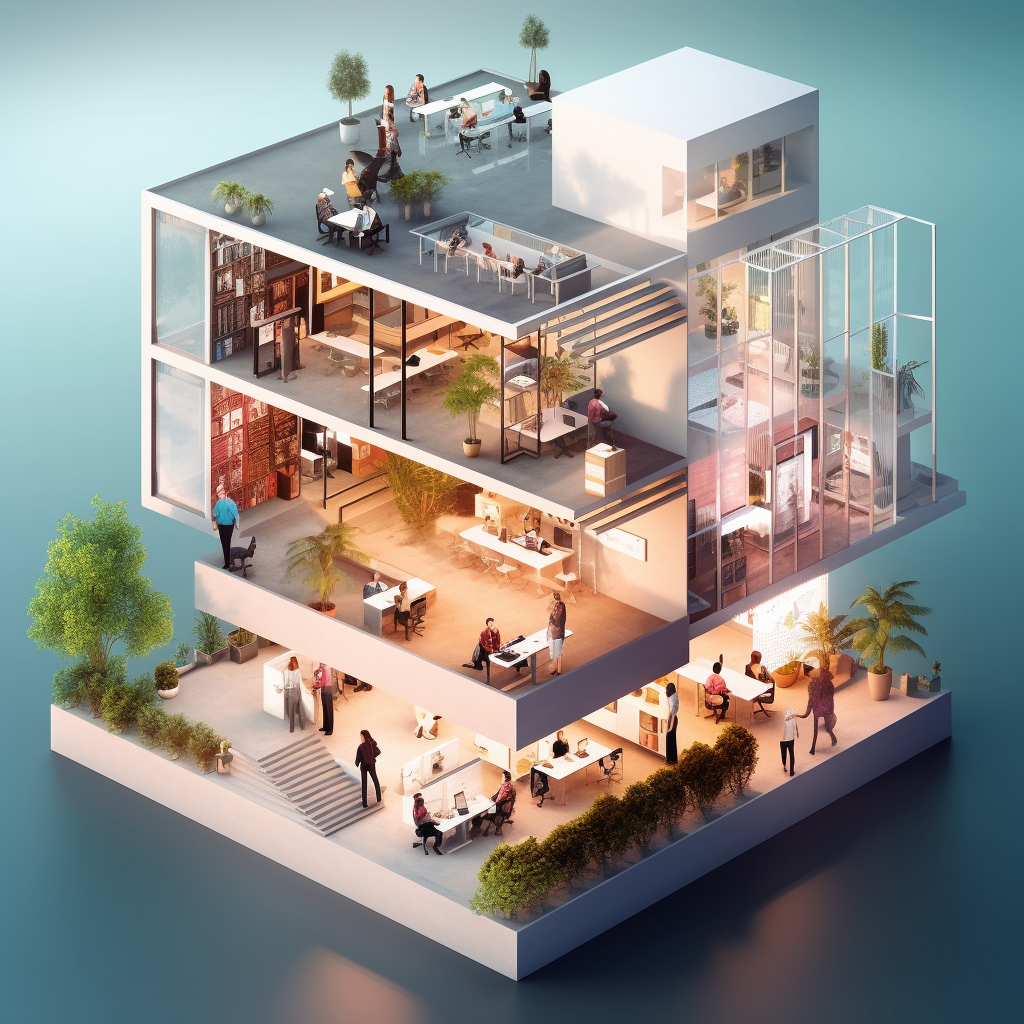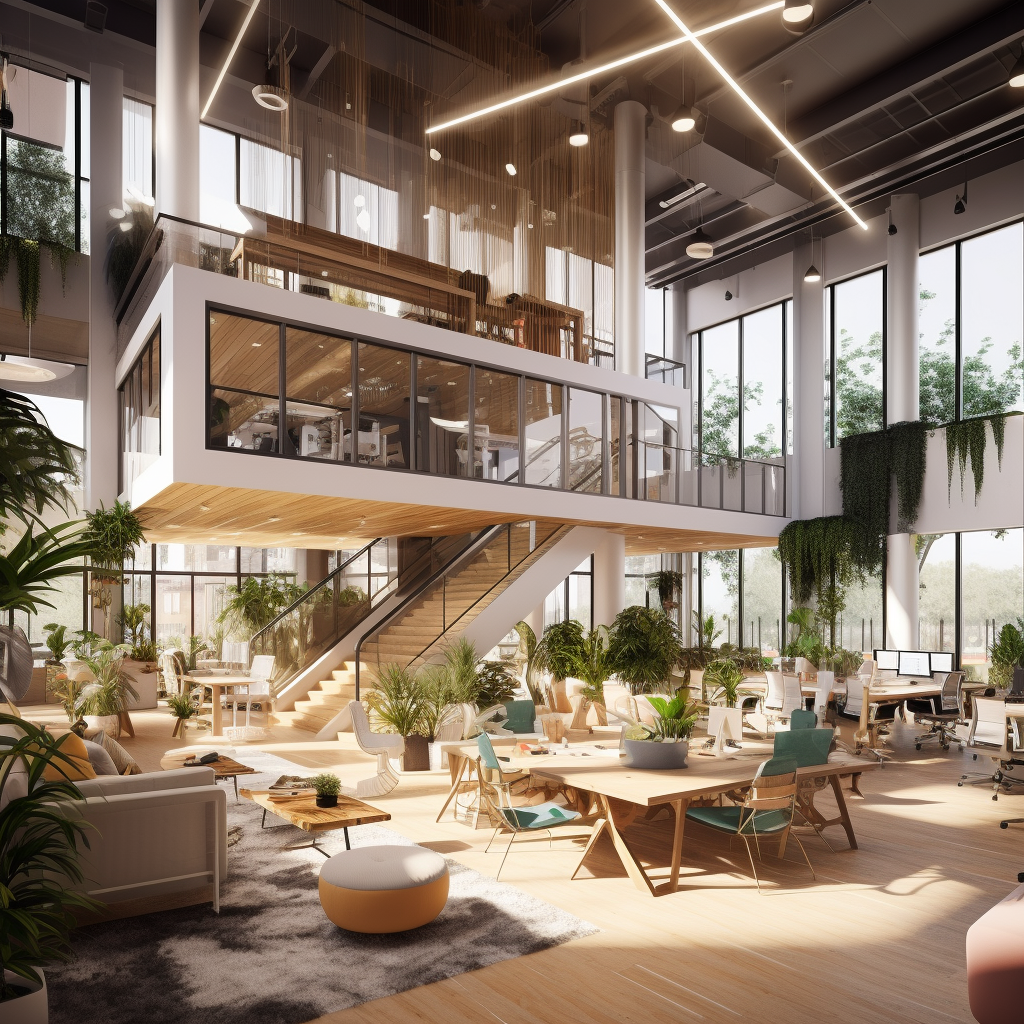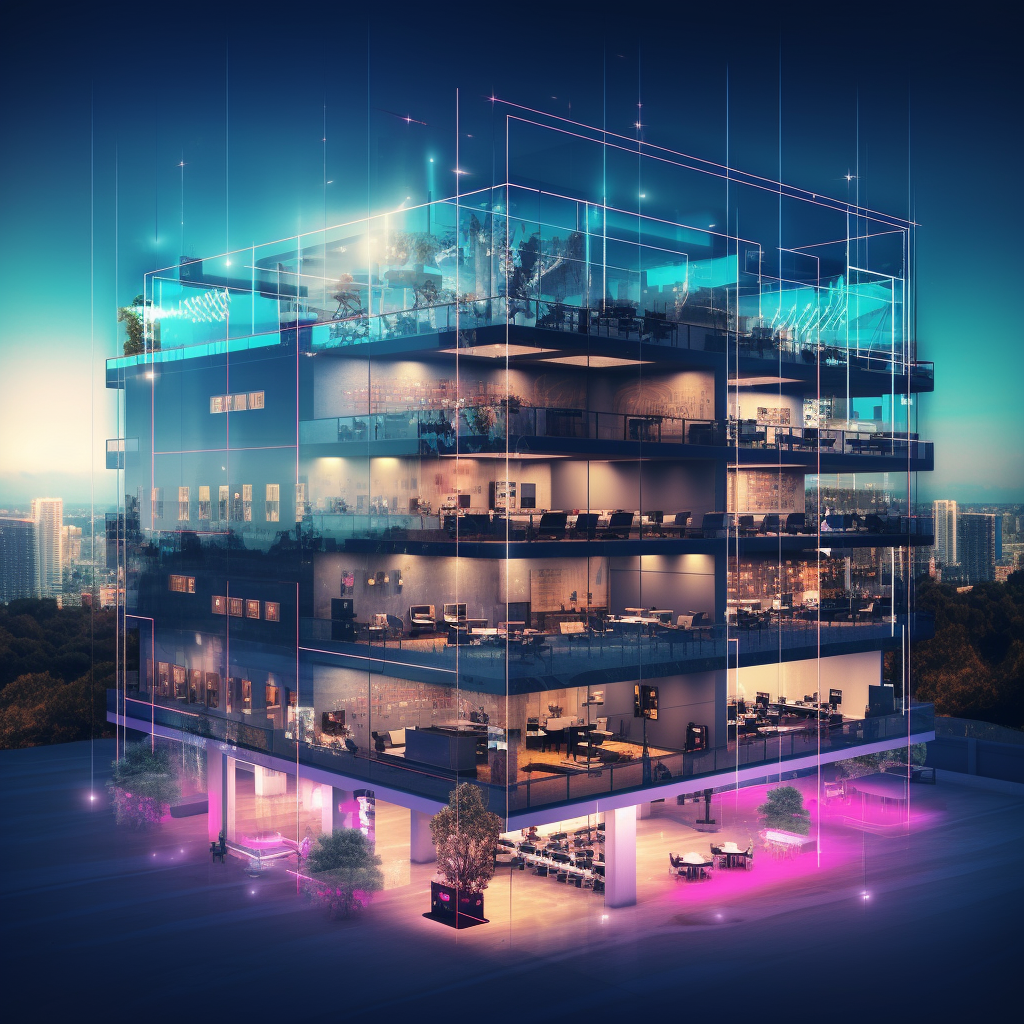The evolution of workspaces from traditional offices to dynamic coworking environments represents a profound shift not just in where we work, but how we work and connect. This transformation is underpinned by the interplay between the ‘hardware’—the physical architecture and design of spaces—and the ‘software’—the operational models, cultural ethos, and community spirit that animate these environments. This piece explores how the synergy between hardware and software creates coworking spaces that are more than just places to work; they are ecosystems of innovation, collaboration, and growth.
The Role of Hardware: Setting the Stage: Architects and designers lay the foundation of coworking spaces, crafting the 'hardware' that dictates the flow, aesthetics, and functionality of these environments. From the strategic use of open floor plans that foster collaboration to private pods that offer solitude, the physical design of coworking spaces is meticulously engineered to accommodate diverse work styles and needs. This section delves into how architectural elements like natural lighting, biophilic design, and adaptable workstations are crucial in creating spaces that enhance productivity and well-being.
The Essence of Software: Breathing Life into Spaces
While the hardware sets the stage, it is the ‘software’—the operational model, community management, and cultural programming—that infuses coworking spaces with life and purpose. Coworking operators curate experiences that foster community, collaboration, and creativity, turning physical spaces into vibrant ecosystems. This part explores how the software of coworking spaces emphasizes flexibility, networking opportunities, and a sense of belonging, transforming the way individuals and teams work and interact.
Symbiosis: When Hardware Meets Software
The true magic of coworking environments lies in the symbiosis between hardware and software. This section examines case studies of successful coworking spaces that have mastered this balance, illustrating how the integration of thoughtful design (hardware) with intentional community-building and operational models (software) leads to environments that not only support work but also inspire innovation and foster a strong sense of community.
Challenges and Opportunities: Despite the potential of this symbiotic relationship, challenges arise in marrying hardware and software effectively. Issues such as designing spaces that are too rigid to adapt to evolving work trends or cultivating a community spirit that aligns with the physical environment are discussed. This part also looks at the opportunities for architects, designers, and coworking operators to collaborate more closely, leveraging insights from both domains to create spaces that are both functionally exceptional and culturally enriching.

Looking Ahead: The Future of Coworking Spaces
As the coworking movement continues to evolve, the interplay between hardware and software will only grow more critical. This conclusion speculates on future trends in coworking space design and operation, emphasizing the need for continuous innovation in both physical and cultural aspects to meet the changing needs of the modern workforce. It calls for a holistic approach to designing and managing coworking spaces, one that equally values the contributions of both hardware and software in shaping the future of work.
Creating a thriving coworking environment goes beyond just the architecture and design; it's about integrating community, innovation, and collaboration into every corner of these spaces. It’s the dynamic interplay between our architectural 'hardware' and our cultural 'software' that transforms these places into vibrant ecosystems. In every successful coworking space lies this synergy of space and spirit, where the physical layout and the community it supports enhance and elevate each other.
As we forge ahead, the true measure of a transformative coworking space will be found in its ability to harmonize architectural design with a vibrant cultural ethos. This fusion of the tangible with the intangible sets the stage for work environments that are as productive as they are inspiring. Let us champion spaces that nurture this profound connection, shaping environments where innovation, collaboration, and community not only coexist but flourish







